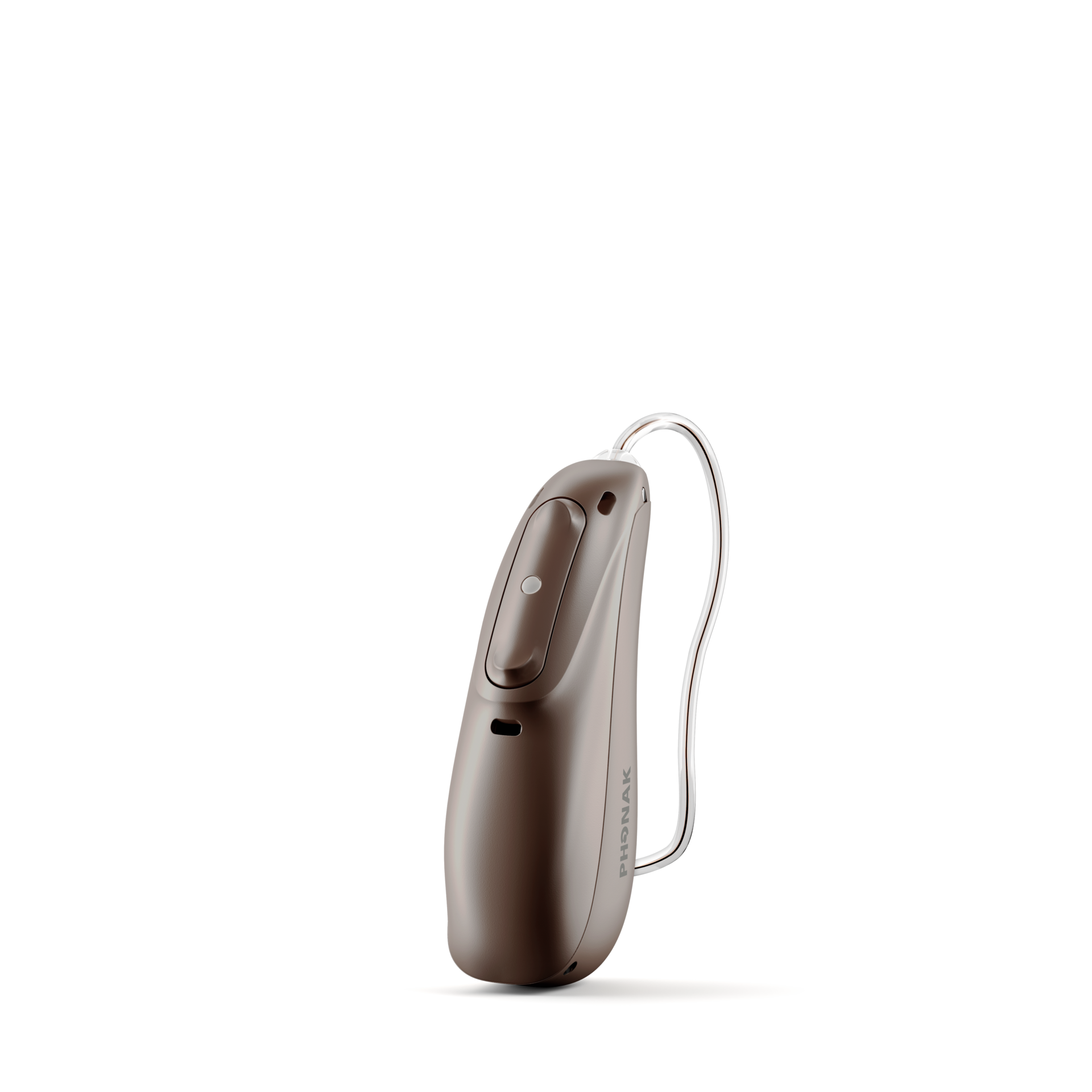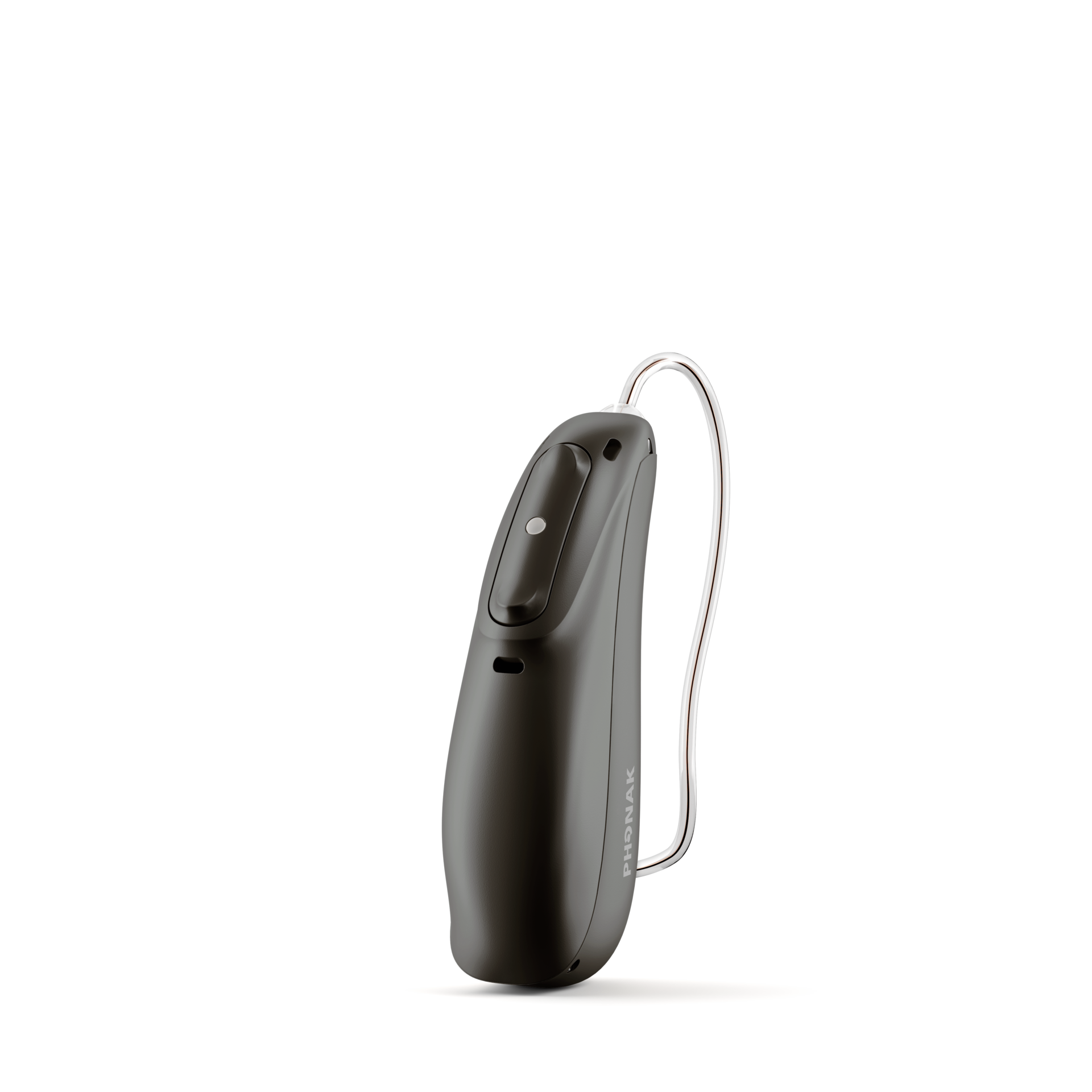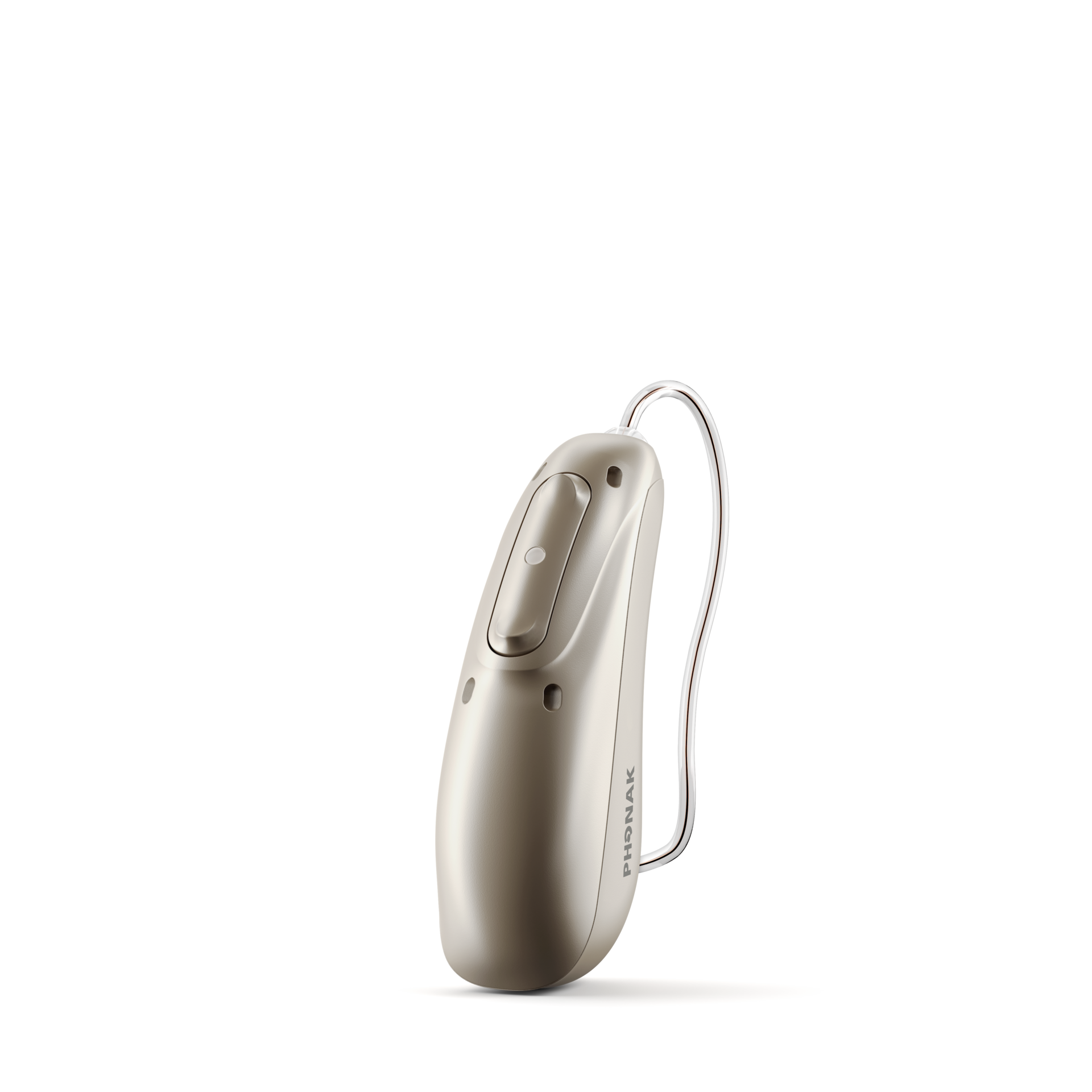Fußnoten
* bis zu 50 cm Wassertiefe
** Die Berechnung von 800 Batterien basiert auf einer durchschnittlichen Lebensdauer von 5 Tagen pro Batterie, bei einer Lebensdauer des Hörsystems von 5 bis 6 Jahren.
*** 16 Stunden Akkulaufzeit mit einer einzigen Akkuladung, davon 8 Stunden Hören in Alltagssituationen, 4 Stunden Bluetooth-Streaming und 4 Stunden TV-Streaming.
Die Akkulaufzeit kann bei Verwendung des ActiveVent Receivers minimal verkürzt sein.
1. Appleton, J. (2020) AutoSense OS 4.0- significantly less listening effort and preferred for speech intelligibility. Phonak Field Study News, Quelle: www.phonak.com/evidence, Stand Februar 2022.
Latzel, M. & Hobi, S. (2022) Receiver with mechanical vent provides benefit of open and closed acoustics for better speech understanding in noise and naturalness of own voice perception. Phonak Field Study News, in Vorbereitung. Mitte 2022 erwartet.
Thibodeau L. M. (2020) Benefits in Speech Recognition in Noise with Remote Wireless Microphones in Group Settings. Journal of the American Academy of Audiology, 31(6), 404–411.
2. Woodward,J and Latzel, M (2022) New implementation of directional beamforming configurations show improved speech understanding and reduced listening effort. Phonak Field Study News, in Vorbereitung. Für Ende 2022 erwartet.
3. Appleton, J. (2020) AutoSense OS 4.0- significantly less listening effort and preferred for speech intelligibility. Phonak Field Study News, Quelle: www.phonak.com/evidence, Stand Februar 2022.
4. Hornsby, B.W.Y. (2013). The effects of hearing aid use on listening effort and mental
fatigue associated with sustained speech processing demands. Ear and Hearing, 34(5), 523–534. https://doi.org/10.1097/AUD.0b013e31828003d8
Picou, E.M., Ricketts, T.A., & Hornsby, B.W.Y. (2013). How hearing aids, background noise, and visual cues influence objective listening effort. Ear and Hearing, 34(5), e52–e64. https://doi.org/10.1097/AUD.0b013e31827f0431
Pichora-Fuller, M.K., & Singh, G. (2006). Effects of Age on Auditory and Cognitive Processing: Implications for Hearing Aid Fitting and Audiologic Rehabilitation. Trends in Amplification, 10(1), 29–59. https://doi.org/10.1177/108471380601000103.
5. Vercammen, C., Ferguson, M., Kramer, S.E., et al. (2020). Well-Hearing is Well-Being. Hearing Review, 27(3), 18-22. Quelle: https://www.hearingreview.com/hearing-loss/patient-care/counseling-education/well-hearing-is-well-being, Stand 1. Juni 2020.
6. Nilsson, M. & Omisore, D., (2017). The Phonak rechargeable solution: Part 2. Phonak Field Study News, Quelle: www.phonak.com/evidence, Stand 19. Februar 2018.
















